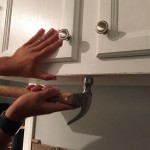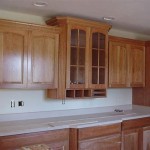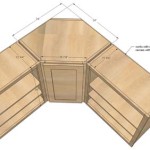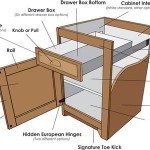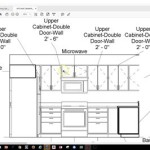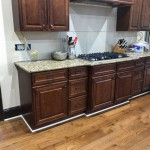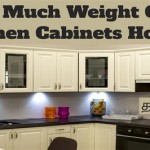Kitchen Cabinet Size Codes: Decoding the Industry Standard
Understanding kitchen cabinet size codes is crucial for anyone involved in designing, ordering, or installing kitchen cabinetry. These codes provide a concise way to communicate the dimensions and configuration of cabinets, ensuring accuracy and efficiency throughout the process. While seemingly complex at first glance, these codes follow a logical structure that, once understood, simplifies the selection and arrangement of cabinets.
Cabinet size codes typically consist of a combination of letters and numbers. These characters represent specific measurements and features, allowing manufacturers and installers to identify the exact specifications of each cabinet unit. Decoding these codes eliminates ambiguity and ensures that the delivered cabinets precisely match the design plan.
The first part of the code generally indicates the cabinet type. Common abbreviations include: "B" for base cabinets, "W" for wall cabinets, "T" for tall cabinets or pantry cabinets, and "D" for drawer base cabinets. This initial letter quickly categorizes the cabinet's intended location and general function within the kitchen layout.
Following the type indicator, the code typically specifies the cabinet's width in inches. This number directly represents the horizontal dimension of the cabinet face. For example, a code beginning with "B30" signifies a base cabinet with a width of 30 inches. These width measurements are standardized to accommodate common kitchen dimensions and appliance sizes.
The subsequent part of the code can vary slightly depending on the manufacturer, but often indicates the cabinet's height and depth. For wall cabinets, the height is usually included after the width. A "W3030" code, for instance, would indicate a wall cabinet 30 inches wide and 30 inches high. Base cabinets typically have a standard height, so the code might proceed directly to the depth. "B3012" could represent a base cabinet 30 inches wide and 12 inches deep.
Certain cabinets, particularly those designed for specific appliances or functionalities, may have additional letters or numbers within the code. For example, a sink base cabinet might be designated with an "SB" prefix, or a corner cabinet with a "C." These additions provide further clarity regarding the cabinet's purpose and configuration.
Understanding the nuances of cabinet depth is particularly important. Standard base cabinets typically have a depth of 24 inches, excluding the door. Wall cabinets typically have a depth of 12 inches. However, variations exist, especially with specialty cabinets. Always refer to the manufacturer's specifications to confirm the exact depth, as this measurement impacts countertop overhang and overall kitchen functionality.
The height of wall cabinets is another crucial dimension. Standard wall cabinets are commonly available in heights of 12, 15, 18, 30, 36, and 42 inches. Selecting the appropriate height depends on factors like ceiling height, available wall space, and desired storage capacity. Taller cabinets maximize storage but may require step stools or ladders for access.
Blind corner cabinets present a unique coding challenge. These cabinets are designed to fit into the corners where two runs of cabinetry meet. Their codes often incorporate additional measurements to indicate the dimensions of the adjacent cabinet faces. Understanding these codes is essential for ensuring a seamless fit and maximizing storage in these often-underutilized spaces.
Beyond the basic dimensions, cabinet codes can also include information about specific features. This might include designations for drawer configurations, door styles, or interior accessories. Consulting the manufacturer's documentation is crucial for deciphering these additional codes and ensuring that the chosen cabinets meet all functional and aesthetic requirements.
While standardization exists within the industry, variations in coding systems can occur between manufacturers. Always refer to the specific manufacturer's documentation when interpreting cabinet codes. This ensures accurate ordering and prevents costly errors during installation. Manufacturer's websites and catalogs typically provide comprehensive guides to their specific coding practices.
Online resources, such as kitchen design software and cabinet supplier websites, often include tools to assist with understanding and utilizing cabinet size codes. These tools can simplify the design process and ensure that the chosen cabinets fit the available space and meet the desired functionality.
Careful attention to detail and a thorough understanding of cabinet size codes are essential for a successful kitchen project. By deciphering these codes accurately, professionals can ensure that the final result matches the design vision and provides the desired storage and functionality.
Effective communication between designers, suppliers, and installers relies on the accurate interpretation of these codes. A shared understanding of the coding system minimizes errors, streamlines the ordering process, and ensures a smooth and efficient installation.
When in doubt about a particular code, always contact the manufacturer or supplier for clarification. This proactive approach prevents misunderstandings and ensures that the chosen cabinets precisely meet the project's requirements.

Your Kitchen Renovation Measured For Perfection Rona

170 Best Kitchen Base Cabinets Ideas Building Diy

Kitchen And Dining Area Measurements Standards Guide

Wall Cabinets Upcodes

Furnitures House Modern Standard Size Cabinet Home Kitchen Design N Lfurniture

Your Kitchen Renovation Measured For Perfection Rona

Kitchen Cabinet Sizes What Are Standard Dimensions Of Cabinets

Standard Kitchen Cabinet Dimensions For Your Homee Design Cafe

Accessible Kitchen Design Accessibility Services

Low P High Quality Modern Style American Standard Size Kitchen Cabinet N Lfurniture
Related Posts

